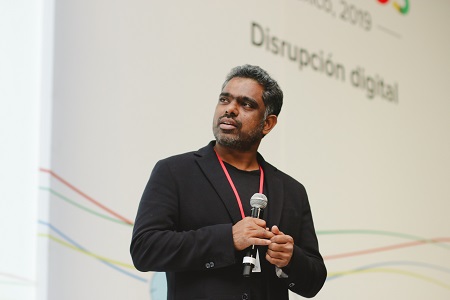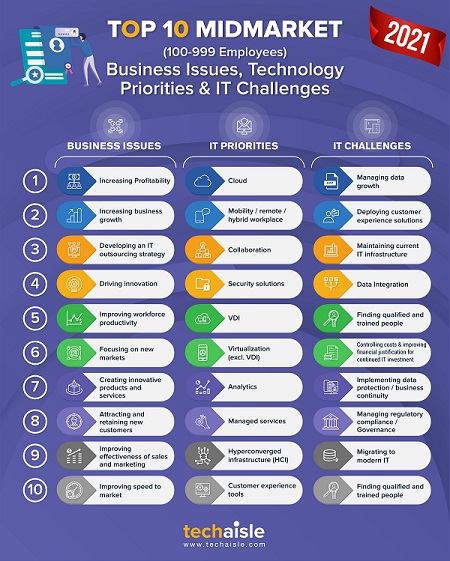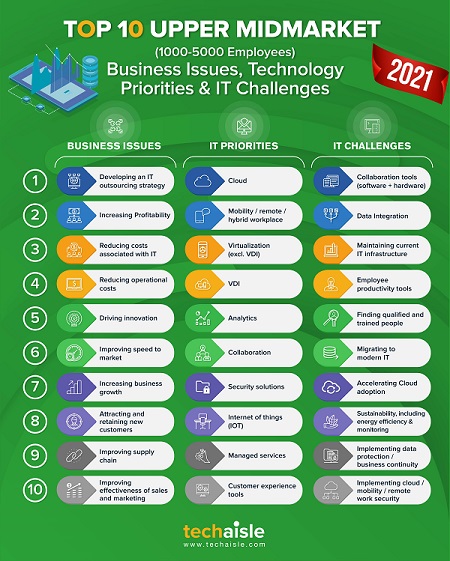Zoho was founded in 1996, twenty-five years ago, with a mission to deliver easy-to-use and deploy CRM solutions to the SOHO market segment (Small Office, Home Office). Even the Zoho name was a spin from SOHO. In the last 25 years, Zoho has transformed from a fledgling startup to an enterprise serving small, midsized, large, and public sector organizations. In contrast, Salesforce was founded 22 years ago. It is a similar timeframe as Zoho, but each is at different levels – revenue, awareness, customers, and employees. How does Zoho keep itself grounded with such a lopsided competition? Today's business world admires Unicorns, applauds valuations, overlooks SaaS suppliers' profitability. Not that there is anything detrimental about chasing unicorn status with little to show profitability, Zoho founders have been tracking employee empowerment and customer success. In the last 25 years, Zoho has become well-known for its easily deployable, easy to use, full-featured applications. Recently Zoho is being recognized for its top-down driven, empathetic culture.
What is more critical to Zoho, delivering customer success or empowering organizational culture? Each organization goes through several essential points of decision in its journey. What were some of those decision points? Would a different decision have changed the trajectory of Zoho and on a collision course with Salesforce? Did Zoho ever reach a crossroad, break-it, or make-it stage? Many questions had been swirling in my mind, which I decided to address to Raju Vegesna, Chief Strategy Officer, Zoho.
True to the initial mission of empowering employees, Raju has no regrets. Instead, he describes Zoho's achievements as fulfilling. He has great admiration for Salesforce but quips that Zoho does not sell, customers purchase, and he is thrilled to be on the path Zoho has chosen.
Read on, excerpts from my very detailed interview with Raju Vegesna.
Fulfillment is the name for Zoho's 25-year journey
Can you describe Zoho's 25-year journey in one word? What is that word?
It's tough to describe our journey in one word. There is an internal perspective which is fulfillment. If we do not have that, we cannot have confidence in what we are doing and satisfaction with what we are doing. The feeling of fulfillment started early on and has continued. Even on Zoho's website's homepage, we showcase it as a life's work which is only possible if we inner fulfillment.
Customer success vs. organizational culture
What is more critical to Zoho, delivering customer success or empowering organizational culture?
We cannot separate customer success and organizational culture. They are two sides of the same coin. If we do not have organizational empathy and that culture right, then it will show up on the customer side. And if we do not have one side right then, the other side is not going to work. We often say, when you have a customer problem, it means you also have an employee problem. These are interlinked - one is external facing, and the other is internal facing. And if you have that inner empathy to humility, it will show up as a positive impact when servicing a customer. And this is ingrained and built into the organization. It is a simple mandate. If it is an employee's responsibility to keep the customer happy, the employee should have the freedom to think and act, and so it has to be built into the organization's DNA.
Chasing Unicorns
How do you keep yourself grounded?
We do not pay too much attention to valuations. We do not think about it. We have been through multiple bubbles, up and down cycles, so they do not bother as much. Then we also realize that the market, to some extent, is biased towards public companies. How often do you hear about private companies? For example, Tableau versus SAS, which is a private company. Or Walmart versus Aldi. There is an inherent bias in the market. Bias puts private companies at a disadvantage because they don't have the mindshare. Why didn't someone hear about Zoho earlier, partly because private companies do not get enough exposure? They are not talked about it because there's no inherent gain for other people. But then there are also a few things that are on our side that public companies don't. So, what, how do we play the advantages. For example, we don't have a timeline and a time horizon to operate. Now we can plan out a decade in advance. Some projects have been in the last 6-9 years in Zoho that haven't seen the light of the day. And when you have a public company running on a quarter-by-quarter basis, they don't have the advantage to plan it out. We try to focus on the process and what is in our control and do it the right way.
Critical decision points
What were critical decision points? Do you think those decisions changed the trajectory of Zoho? What would have happened if you did not make those decisions?
I'd say some early lessons helped a lot. Initially, our primary customers were optical companies. When the telecom bubble burst. We had about 305 customers, of which 300 or 301 of them died. Over a year or two, imagine that when 99% of your customers vanish, you might as well. We had zero debt, and we had some savings. And we had very hungry engineers. We took all the savings and invested in the engineers, and pivoted. Even from the beginning, we always believed in zero debt, which is a crucial reason for survival. Another lesson we learned was that diversification becomes vital for the product. Now we are fully diversified - product portfolio, regions, countries. We don't have a customer that is contributing to more than 1% of our revenue. The exciting thing is that not all the products we created back then exist today, but most of the employees who made the products still exist and are just creating new products. One hundred people have been with the company for at least 20 years, and they are just creating new things.
Deciding product roadmap
How did you decide to develop which apps and in which order?
It's one of the extremely simplest ways to decide. What are the apps that we do not use to run our business? What are the apps that we need to run our own business? And, and if there is a missing piece, we build it. So we believe that if we run our entire business on our own products and benefit from it, other companies will have the same benefits. We have 50 apps now, but I look at the road ahead and say we still have a long way to go. More importantly, can we make the boundaries between these applications disappear and appear as a single application? Why should users pick and choose the apps they want? Why can't everything contextually tie together? Why are there walls? A business may not have segregation between a front office or a back office. Why should there be a separation in software, support, sales system, marketing system, and several vendors that serve the needs? As simple as that. And that segregation has to, and separation has to go away. And that is one of the walls. So, it's a journey, but our tools and the missing pieces define our roadmap.
Surviving and thriving
Did you ever reach a crossroad, break-it, or make-it stage?
Survival instinct comes immediately after the break or make moment. I vividly remember when we pivoted, we created a product to address the IP market. And we demonstrated the product at a Vegas show. We were so tense because our future was dependent on that product. As we kept on demoing the product, more and more people started liking it. And that is when we said; now we have a future. Survival was a priority. And then, later, we started focusing on expansion and thriving.
Mentors and learnings
Who do you turn to for learning and mentoring?
We have a tightly-knit team. The management team has been sitting next to each other for a couple of decades. We go through the journey together. We also learn a lot from external companies. We study companies. How did all the private companies become one of the top leaders, for example, Aldi? Or the makers of M&Ms, which have been around for 100 years. Or how has Marvin Window been successful for the last 115 years? Or take a company like Bata. If you grew up in India, it is ingrained in you but is not an Indian company. It is a company out of the Czech Republic.
Salesforce admiration – purchasing vs. selling, small and enterprise customers
Salesforce started with a focus on small businesses but pivoted to enterprise customers. Now it is re-engaging with SMBs. Did you ever want to become a Salesforce?
There is one area that I admire in Salesforce. It educated the market about SaS. I have respect for the Salesforce platform on the technology front because they lead the way. But on the sales and distribution model, we decided to take a different approach. We are primarily an engineering-centric company, so and won't be a sales and marketing-centric company—money matters. We instead re-invest the money in our engineers than on sales and marketing. We like the bottom-up approach, where we started selling to small businesses. We named Zoho itself after Soho, small office, home office market. Slowly, we started serving larger companies. It is the customers pulling us into their organizations and not Zoho selling to those organizations. It's a subtle but essential difference. In other words, in a lot of cases, our products are chased, not sold. And that changes the dynamics. We see lately an increase in mid to large size customers adopting Zoho. If you look at our sister division ManageEngine the target market is mid-sized to large enterprises, and 60% of fortune 500 companies are our customers.
Respect for competition
Do we ever want to become a Salesforce or SAP? We are not sales-focused. We have a good number of salespeople, but it is a tiny percentage of the total workforce. We will continue to be an R&D company. We understand that there is competition, and we respect them. But then we respect our customers a lot more. We will build products, focus on R&D, and have these local, transnational teams, which will be on the ground, looking at customers developing solutions to meet their needs. Our business model is relatively simple, mainly because we are a private company. We only worry about two sets of people – customers and employees - because the third set, investors, are no longer at play.
Next 25 year changes – transnational localism
What will you change in your evolution for the next 25 years?
There are a few things that won't change - culture, values, people, and the investment in R&D. What will change is what we call transnational localism, which means we will have local teams available in multiple countries, geographically. We are strengthening our local presence in every country we are present in to serve the local customers. And that's an important strategy. We are present in about 20 countries, and we will see our team expanding in each of these countries, and that team will be solving the local customer's problems.



















